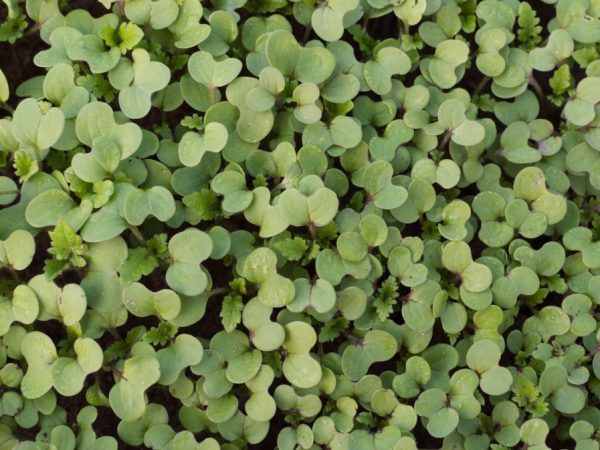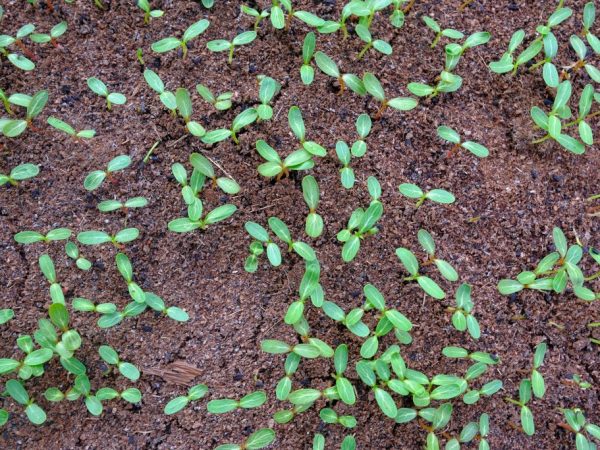The use of green manure for tomatoes
Tomato siderata are excellent organic helpers for nourishing the soil and obtaining a rich tomato harvest when grown on fertile soil.
Useful properties of green manure

The use of green manure for tomatoes
When planting green manures in the process of cultivating vegetables, gardeners receive a number of advantages:
- Organic fertilizers give a boost to the vegetable crop for rapid growth. Green manure attracts bacteria useful for plants, which release nitrogen during their vital activity. This component has a beneficial effect on the development of plants, stimulating their active growth.
- Plant residues remain in the soil for a long time and are not washed out by water.
- The root system of organic fertilizers in the process of their growth becomes an obstacle to the growth of weeds.
- Left on the garden bed, root-cut siderates for tomatoes act as protection against the sun during the day and frost at night.
- Siderata accumulate in the soil, making it fertile for the cultivation of subsequent vegetable crops.
The method of feeding the earth with organic matter is relatively cheap, but no less effective compared to the use of modern drugs.
Types of green manure
Legumes and grains are considered the best green manure for tomatoes, but summer residents also plant other crops that have beneficial properties for tomatoes.
Alfalfa
Alfalfa stores nitrogen in the topsoil, improving its structural composition.
Alfalfa is a perennial legume that has been cultivated in one place for several years. It is not used as a siderat. Siderata are green fertilizers that grow in one fairly short season, but one of the best precursors of tomato production in a production environment is the perennial herb layer.
Lupine
Lupine, through the active development of the root system, effectively loosens the upper layers of the earth, saturating it with oxygen. Due to its aroma, it repels harmful insects from tomato plantings.
Radish
Pancake radish has developed roots that are able to extract nutrients at a depth and bring them to the surface. The roots growing in breadth and depth loosen the ground, providing the culture with air access.
Mustard
Planting white mustard is an excellent method of combating various pests and infectious fungal diseases. Also, mustard is able to saturate the earth with sulfur and phosphorus, increase its fertility and prevent erosion.
Phacelia

Phacelia will saturate the soil with nitrogen
Phacelia green manure neutralizes the excessive acidity of the soil and resists fungi and viruses. This plant saturates the earth with nitrogen and potassium, and will also attract pollinators to the suburban area, which are necessary at the stage of tomato flowering.
Vika
Vetch green manure has shown itself to be able to increase the tomato yield by 40-45% due to the accumulation of nitrogen-containing components in the soil layers.
Plants that are used as green manure must have certain properties: sprout quickly, quickly build up green mass, be easily crushed when digging and quickly decompose in the soil, turning into organic fertilizer.
Sowing time
Siderata can be sown in advance or simultaneously with planting vegetables, that is, with the onset of spring heat and up to autumn frosts. You can also sow them for the winter, so that by the spring they come to life and quickly gain growth.
Many summer residents prefer to sow organic fertilizers in advance so that the plants can grow before planting a vegetable crop.
Spring green manure
For planting in spring, crops are suitable that can withstand sudden frosts and grow at low temperatures. Mustard and phacelia are well suited for these purposes. They are mowed as they grow, making room for tomato plantings, or left until summer, until they begin to bloom.
Winter green manures
For sowing before winter, the most suitable green fertilizers for vegetables are winter rye and clover. Siderata for tomatoes are sown after the tomato harvest and the vegetation that has grown in spring is mowed, starting in April.
Tatiana Orlova (Candidate of Agricultural Sciences):
Although green manures are called winter crops, that is, they are sown simultaneously with the sowing of winter crops - rye, winter wheat, but they do not remain in the beds in the winter. They are sown in about mid-August, in September-October they manage to grow a green mass up to 20-25 cm high, which is crushed at the end of October (you can use a garden trimmer) and dug into the soil. Only then will there be any sense from the siderates. During the remaining end of autumn, during the winter and early spring, the siderates in the soil will completely decompose. If you mow and dig up green manures in April, then how can you plant tomatoes filled with fresh grass after that? This grass will be "dead weight" and will become fertilizer only by the end of summer.
Application methods
You can use organic fertilizers in one of 3 ways.
Mowing
The application of fertilizers by mowing in spring or summer cuts off all the green mass to the root, and the root parts of the green manure remain in the soil.
In this case, the mown green manures are composted somewhere separately in a heap, turning into compost, and the earth must be dug up.
Simultaneous cultivation
The parallel cultivation of organics and tomatoes is a very laborious method that requires constant care at the same time for tomato bushes and green manure vegetation, which is trimmed once a week so that it does not interfere with the flow of sunlight. However, it is quite effective, it allows you to get the greatest amount of useful elements from organics and resist weeds.
Plowing
Plowing the land is a quick method of using organic matter, the essence of which is to dig up the soil along with plant residues, when the roots of organic fertilizers are turned up to the surface of the earth. However, its effectiveness is lost in comparison with the previous ones due to the destruction of beneficial microorganisms under the influence of mechanical manipulations, which worsens the composition and quality characteristics of organic matter.
Tatiana Orlova (Candidate of Agricultural Sciences):
Plowing is always carried out with a seam turnover! This is the only way to incorporate plant residues into the soil. If you simply loosen the ground, leaving the cut siderates on the surface, then they will lie like this without decomposing for a long time. The process of converting plant residues into green fertilizer occurs under the influence of soil bacteria and plowing does not destroy them in any way.



